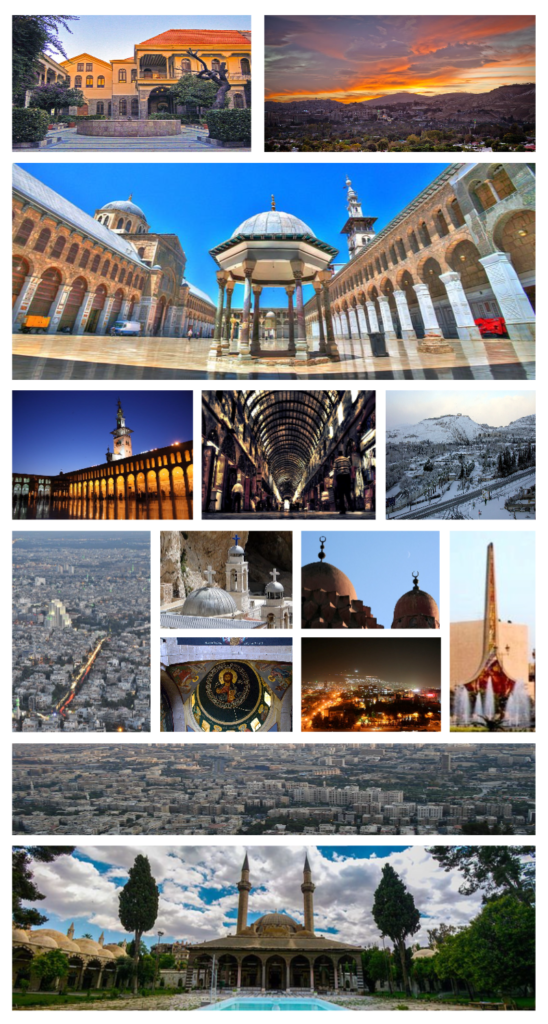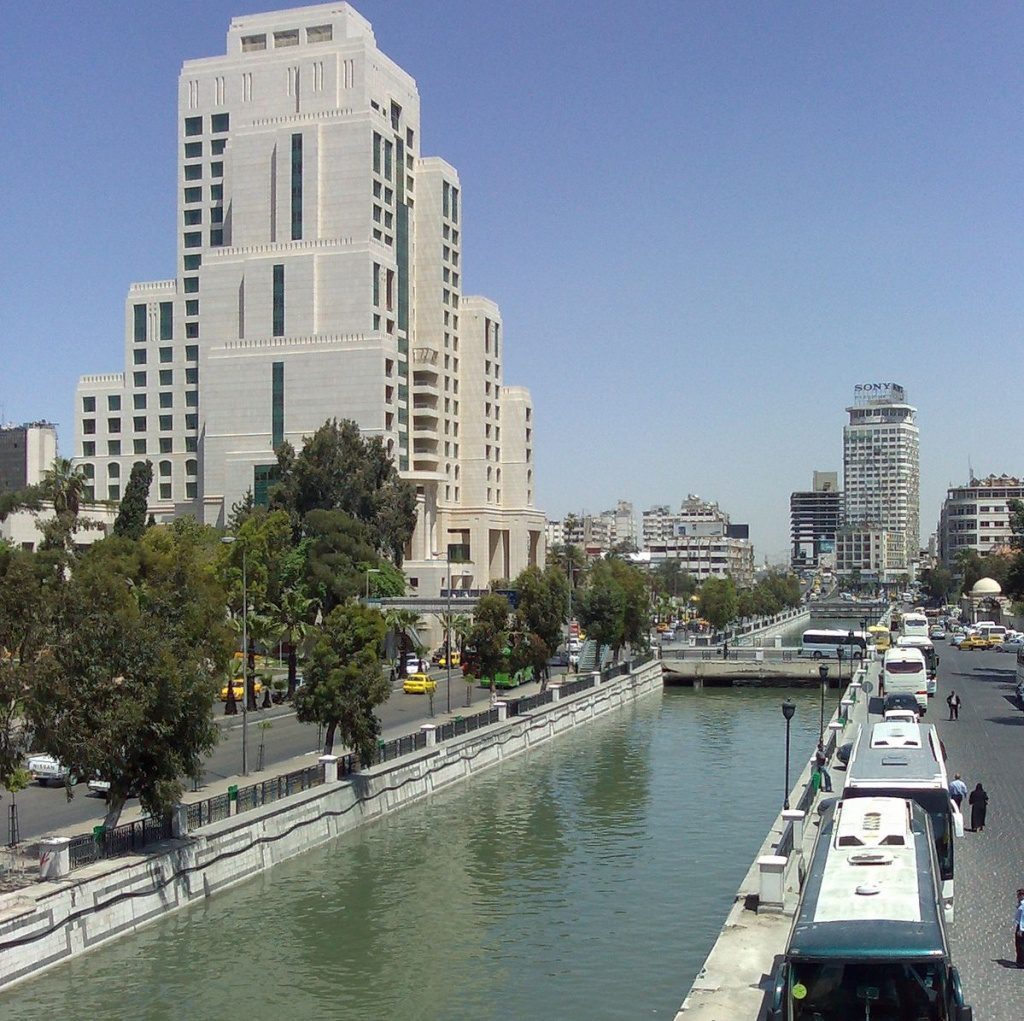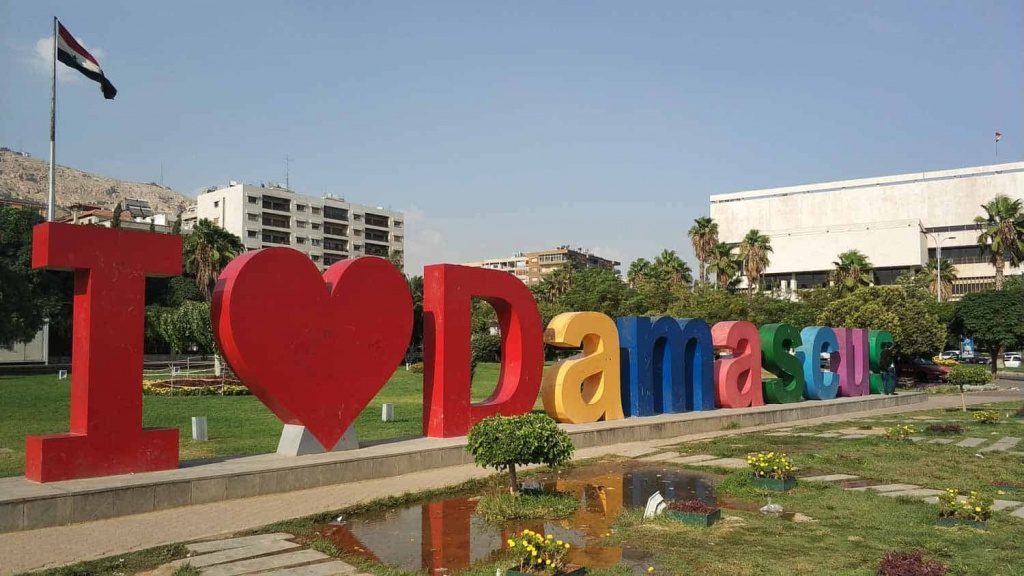Syria's Capital: A Deep Dive Into The Heart Of History And Modernity
When you think about the Middle East, Syria is one of those countries that carries a weight of history, culture, and complexity. The پایتخت سوریه, or the capital of Syria, Damascus, is not just a city—it’s a living testament to thousands of years of human civilization. From ancient empires to modern-day challenges, Damascus has stood the test of time. If you’re curious about what makes this city so special, you’ve come to the right place.
Damascus isn’t just any capital—it’s often referred to as the “oldest continuously inhabited city in the world.” That’s right, folks! This place has been a hub of activity for over 4,000 years. Think about that for a second. While most cities are lucky to hit a couple of centuries, Damascus has been around since before the Bible was written. It’s like the grandparent of cities, full of wisdom and stories waiting to be told.
But let’s not get too caught up in the past. The پایتخت سوریه is also a city of contrasts. You’ll find bustling markets alongside ancient ruins, modern skyscrapers next to historic mosques, and a mix of cultures that make it a melting pot of traditions. In this article, we’ll dive deep into what makes Damascus tick, from its rich history to its vibrant present and uncertain future. So buckle up, because we’re about to take you on a journey!
Read also:Lady Camellia A Blooming Star In The Spotlight
Table of Contents
- A Journey Through Time: The History of Damascus
- Where in the World is Damascus?
- Cultural Melting Pot: Life in Damascus
- Why Tourists Love Damascus
- The Economic Backbone of Syria
- Politics and the Capital
- Challenges Facing the پایتخت سوریه
- What Lies Ahead for Damascus?
- A Brief Biography of Damascus
- Wrapping It All Up
A Journey Through Time: The History of Damascus
Let’s rewind the clock and take a trip back to the days of ancient civilizations. Damascus, the پایتخت سوریه, has been a player on the world stage for millennia. Archaeological evidence suggests that the city has been continuously inhabited since around 4300 BCE. Can you even imagine that? Back then, folks were just figuring out how to domesticate animals, and Damascus was already a thriving settlement.
Throughout history, Damascus has been conquered and ruled by some of the biggest names in the history books. The Egyptians, Assyrians, Babylonians, Persians, Greeks, Romans—you name it, they’ve all had a piece of this city. Each empire left its mark, contributing to the rich tapestry of Damascus’s cultural heritage.
Key Historical Milestones
- 3000 BCE: Early settlements begin to form in the area that will become Damascus.
- 1000 BCE: Damascus becomes a major city in the Aramaic kingdom.
- 64 BCE: The city is conquered by the Romans and becomes part of the Roman Empire.
- 636 CE: Damascus falls to the Muslim Arab forces, marking the beginning of Islamic rule.
- 1516 CE: The city becomes part of the Ottoman Empire, a role it maintains for centuries.
But history isn’t just about dates and empires. Damascus has also been a center of learning, art, and culture. The Umayyad Mosque, one of the oldest and most significant mosques in the world, stands as a testament to the city’s spiritual and architectural importance.
Where in the World is Damascus?
Alright, so we know Damascus is old and full of history, but where exactly is it? The پایتخت سوریه is located in the southwestern part of Syria, nestled at the foot of the Anti-Lebanon mountain range. It’s strategically positioned near the Barada River, which has historically provided the city with water and fertile land for agriculture.
Geographically, Damascus enjoys a temperate climate, with hot, dry summers and mild, rainy winters. This makes it a pretty comfortable place to live compared to some of the more extreme climates in the region. Plus, its location has made it a key hub for trade and travel throughout history.
Fun Facts About Damascus's Geography
- It’s surrounded by lush greenery, earning it the nickname “Janna al-Sham” or “Paradise of Syria.”
- The city is only about 80 kilometers from the Mediterranean Sea, making it relatively accessible to coastal areas.
- Damascus is located at an elevation of around 680 meters above sea level.
Cultural Melting Pot: Life in Damascus
Now let’s talk about what makes Damascus so culturally rich. The city is a blend of traditions, with influences from Arab, Persian, Turkish, and European cultures. You can see this diversity reflected in everything from the architecture to the food to the music.
Read also:Zara Rahim The Rising Star In The World Of Entertainment
Walking through the streets of Damascus, you’ll find yourself surrounded by a mix of modern and traditional lifestyles. There are bustling souks (markets) where you can haggle for anything from spices to handmade crafts. And don’t forget to try the local cuisine—Syrian food is a delicious fusion of Middle Eastern flavors.
Key Cultural Highlights
- Umayyad Mosque: One of the most iconic landmarks in Damascus, this mosque is a must-see for visitors.
- Traditional Music: Damascus has a rich tradition of classical Arabic music, with concerts and performances held regularly.
- Art and Literature: The city has produced many renowned poets, writers, and artists over the years.
Why Tourists Love Damascus
Despite the challenges facing Syria in recent years, Damascus remains a popular destination for travelers who are looking for a unique cultural experience. The city offers a mix of historical landmarks, vibrant markets, and delicious food that keeps visitors coming back for more.
One of the highlights for tourists is the Old City of Damascus, a UNESCO World Heritage Site. Here, you’ll find narrow streets lined with historic buildings, bustling markets, and charming cafes. And let’s not forget the food scene—Damascus is home to some of the best Middle Eastern cuisine you’ll ever taste.
Top Tourist Attractions
- Umayyad Mosque: A stunning example of Islamic architecture.
- Saladin’s Tomb: The final resting place of the legendary Muslim leader.
- Barada River: A great spot for a leisurely walk or picnic.
The Economic Backbone of Syria
As the پایتخت سوریه, Damascus plays a crucial role in the country’s economy. It’s the center of commerce, industry, and finance in Syria, with a wide range of sectors contributing to its economic output.
From textiles to technology, Damascus has a diverse economy that supports millions of people. The city is also a key player in the region’s trade networks, thanks to its strategic location and well-developed infrastructure.
Key Economic Sectors
- Manufacturing: Textiles, food processing, and chemicals are major industries in Damascus.
- Services: Banking, education, and healthcare are important service sectors in the city.
- Tourism: Despite recent challenges, tourism remains a significant contributor to the economy.
Politics and the Capital
As the political center of Syria, Damascus is home to the country’s government institutions and decision-makers. The city has played a pivotal role in shaping the political landscape of the region, both historically and in modern times.
However, the past decade has been marked by significant challenges for Damascus and Syria as a whole. The ongoing conflict has had a profound impact on the city and its people, affecting everything from daily life to the economy and politics.
Key Political Developments
- Syrian Civil War: The conflict has significantly affected Damascus and its role in the region.
- Peace Efforts: Various international and local efforts have been made to bring stability to the city.
Challenges Facing the پایتخت سوریه
Like any city, Damascus faces its share of challenges. From the ongoing conflict to economic difficulties and social issues, the city has a lot on its plate. However, its resilience and determination to thrive are truly inspiring.
Efforts are being made to address these challenges, with local and international organizations working together to support the people of Damascus and rebuild the city. It’s a tough road ahead, but the spirit of the people remains strong.
What Lies Ahead for Damascus?
Looking to the future, Damascus has the potential to continue its legacy as a cultural and economic hub in the Middle East. With ongoing efforts to restore peace and stability, the city could once again become a beacon of hope and progress.
Innovative projects are being developed to improve infrastructure, promote tourism, and support local businesses. The people of Damascus are optimistic about what the future holds, and they’re ready to embrace change and growth.
A Brief Biography of Damascus
Let’s take a quick look at some key facts about Damascus, the پایتخت سوریه:
| Fact | Details |
|---|---|
| Founded | Approximately 4300 BCE |
| Population | Approximately 1.8 million (2020 estimate) |
| Location | Southwestern Syria, near the Anti-Lebanon mountains |
| Major Landmarks | Umayyad Mosque, Saladin’s Tomb, Old City of Damascus |
Wrapping It All Up
So there you have it—a deep dive into the پایتخت سوریه, Damascus. From its ancient roots to its modern-day challenges, this city is a testament to the resilience and spirit of its people. Whether you’re a history buff, a culture lover, or just someone looking for a unique travel experience, Damascus has something to offer everyone.
As we’ve explored, Damascus is more than just a city—it’s a living, breathing symbol of human civilization. Its rich history, vibrant culture, and determination to thrive make it a truly special place. So if you ever get the chance to visit, don’t miss out on the opportunity to experience the magic of Damascus for yourself.
And hey, if you’ve enjoyed this article, why not leave a comment or share it with your friends? Let’s keep the conversation going and spread the word about this incredible city. Thanks for reading, and until next time—stay curious!
Paige Vanzant's Journey: Beyond The Hype
Sania Malory: Unveiling The Star Beyond The Spotlight
Charlotte Parkes Of Leaks: The Unstoppable Force Redefining Whistleblowing

پایتخت کشور سوریه کجاست؟ اطلاعات عمومی

دیدنی های دمشق ، پایتخت سوریه Damascus تاپ توریست

دیدنی های دمشق ، پایتخت سوریه Damascus تاپ توریست